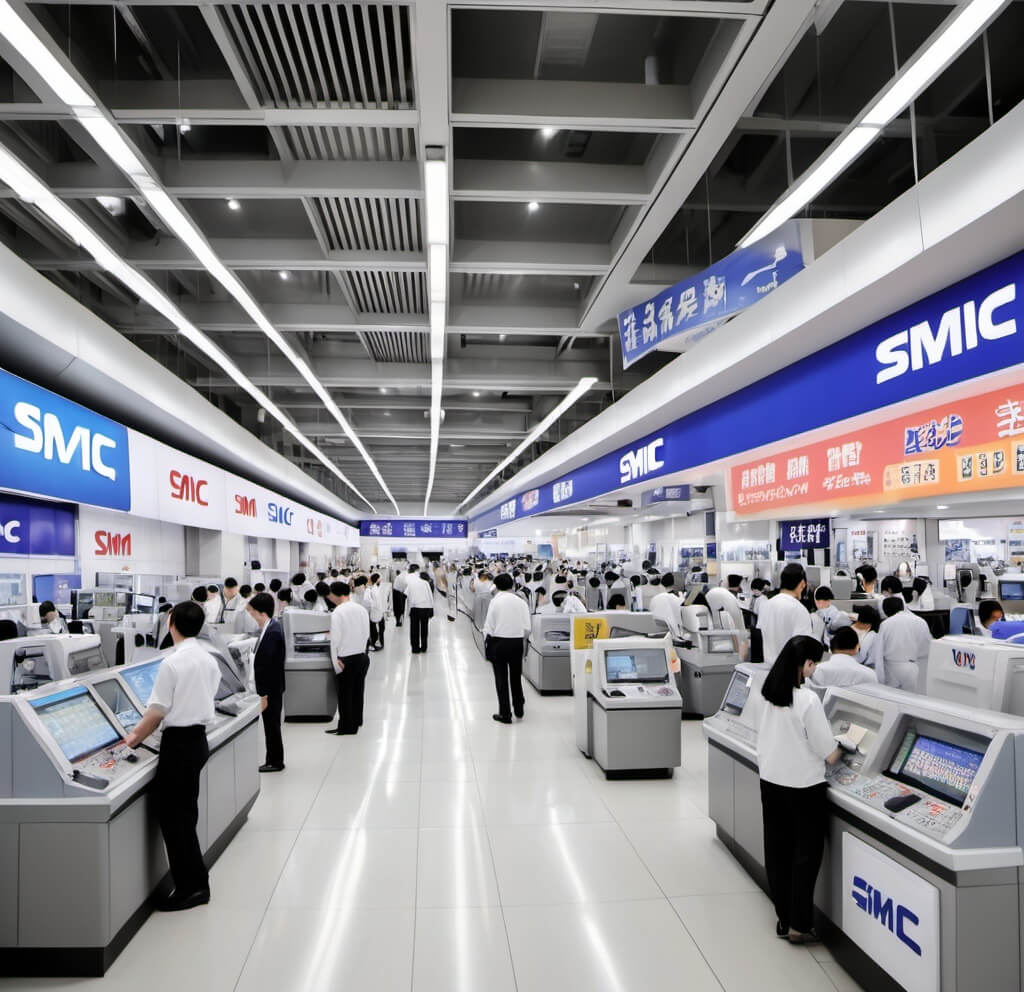Introduction: The Numbers That Matter
Semiconductor Manufacturing International Corporation (SMIC) recently announced its fourth-quarter revenue results, showing a year-over-year (YoY) revenue range between $1.68 billion and $1.82 billion. But what do these numbers mean? Are they a sign of growth, stagnation, or concern? If you’re wondering how SMIC stacks up in the ever-changing semiconductor landscape, this deep dive will help you understand the full picture.
The semiconductor industry is not just about numbers; it’s about innovation, competition, and global supply chains. SMIC’s Q4 results tell a compelling story of how the company is navigating economic challenges, geopolitical risks, and technological advancements. This article will explore about Smic Q4 Yoy 1.68B 1.82B Yoy why these figures matter, what’s driving them, and what the future holds for SMIC.
Let’s break it down into simple terms and explore the broader implications of these results for the company, the industry, and investors.
Read More Sync E2EEDavis TheVerge: The Future of Secure Synchronization
1. Understanding SMIC: A Semiconductor Giant
SMIC is one of China’s largest and most significant semiconductor foundries. It plays a crucial role in producing chips that power everything from smartphones to AI systems. However, unlike Taiwan’s TSMC or South Korea’s Samsung, SMIC primarily focuses on mature process nodes rather than cutting-edge technology.
China’s ambition to become self-sufficient in semiconductor manufacturing heavily depends on SMIC’s growth and technological progress. The company is vital for China’s long-term strategy to reduce reliance on Western chipmakers. Over the years, SMIC has expanded its production capacity, securing government funding and increasing investments in fabrication plants.
2. The Semiconductor Industry Landscape
The semiconductor industry is the backbone of modern technology, fueling innovations in artificial intelligence, 5G, and consumer electronics. It’s also highly cyclical, meaning demand fluctuates based on global economic conditions, supply chain disruptions, and technological advancements.
Recent trends indicate a shift in demand, with AI, autonomous vehicles, and industrial applications driving growth. The global semiconductor market size is expected to reach over $600 billion by 2025, reflecting the growing need for chips in multiple industries. SMIC, as a key player, stands to benefit from this surge if it can navigate its existing challenges.
Read More Ontpinvest Investing Ideas from Ontpress
3. SMIC’s Q4 Financial Highlights
For the fourth quarter of 2023, SMIC reported revenues of $1.678 billion, a 3.6% increase compared to the previous quarter. However, compared to the same period in 2022, the revenue change was relatively flat. Gross margins declined to 16.4%, down from 19.8% in Q3 2023 and 32.0% in Q4 2022, highlighting the increasing cost pressures and market challenges.
This decline in margins suggests rising production costs and pricing pressure from competitors. Despite these challenges, SMIC continues to hold its position in the semiconductor space, showing resilience in an unpredictable market.
4. Revenue Growth: Analyzing the $1.68B – $1.82B YoY Figures
A year-over-year (YoY) revenue comparison provides insight into a company’s ability to grow despite external challenges. For SMIC, revenue remained steady, suggesting that while demand for semiconductor products persisted, external factors such as economic slowdowns and global supply chain issues played a role in limiting growth.
The numbers also indicate that SMIC is maintaining stability despite geopolitical and financial obstacles. Unlike Western companies that faced drastic revenue drops, SMIC’s ability to keep revenue above $1.68 billion YoY signals resilience.
Read More Financial Guide: Ontpinvest – A Comprehensive Investment Strategy
5. Key Factors Driving SMIC’s Performance
A. Geopolitical Factors
U.S.-China trade tensions have led to export restrictions on advanced chip technologies, limiting SMIC’s access to cutting-edge tools like ASML’s EUV lithography machines.
B. Demand for Mature Nodes
Unlike competitors focusing on 3nm and 5nm nodes, SMIC specializes in mature process nodes (28nm, 14nm). This has insulated it from some global supply chain issues but also limited its ability to compete in high-performance computing markets.
C. Chinese Market Growth
China is ramping up semiconductor independence, boosting domestic orders for SMIC. Government policies supporting chip production have helped sustain SMIC’s revenue despite global uncertainties.
D. Increased Investments in Fabrication Plants
SMIC has been expanding its production facilities to meet the growing demand for mature-node semiconductors, particularly in China’s booming automotive and industrial sectors.
6. Competitive Landscape: SMIC vs. Global Players
TSMC vs. SMIC
- TSMC dominates in cutting-edge chips (3nm, 5nm) for companies like Apple and Nvidia.
- SMIC focuses on legacy nodes, catering primarily to mid-tier consumer electronics and industrial applications.
GlobalFoundries vs. SMIC
- GlobalFoundries has diversified customers across industries, while SMIC mainly serves Chinese companies.
- Both companies prioritize mature nodes, but GlobalFoundries has better access to Western markets.
7. Innovations and Technological Advancements
SMIC continues to enhance its manufacturing processes, working on improving yields and efficiency. While it lags behind TSMC in high-end chip production, its focus on cost-effective solutions for mass-market applications remains its strength.
Conclusion: The Big Takeaway
SMIC’s Q4 performance shows stability despite geopolitical and financial pressures. The company remains a critical player in China’s semiconductor ambitions, and while growth may be slow, Smic Q4 Yoy 1.68B 1.82B Yoy strategic positioning ensures its relevance in the industry.
Read More Home Security Companies Near Me: Your Ultimate Guide to Servleader Solutions
Frequently Asked Questions (FAQs)
1. What is SMIC’s main business focus?
SMIC primarily focuses on semiconductor manufacturing, particularly mature process nodes used in consumer electronics, industrial applications, and automotive industries.
2. How does SMIC compare to TSMC?
While TSMC leads in cutting-edge chip manufacturing (3nm, 5nm), SMIC specializes in older, mature nodes (28nm, 14nm) and serves different market segments.
3. What challenges does SMIC face?
SMIC faces challenges such as U.S. trade restrictions, rising production costs, and competition from global semiconductor leaders.
4. How does China’s government support SMIC?
The Chinese government provides financial backing, policy incentives, and funding for R&D to help SMIC achieve self-sufficiency in chip manufacturing.
5. What are SMIC’s future growth plans?
SMIC plans to expand its manufacturing capacity, improve technological capabilities, and focus on meeting China’s growing demand for semiconductors.





 Acronym Generator Alaika
Acronym Generator Alaika